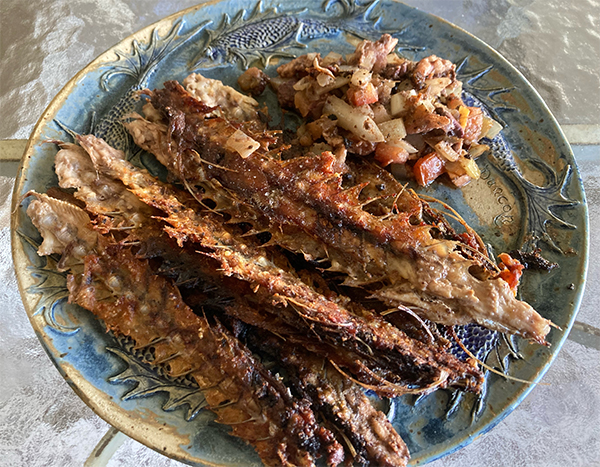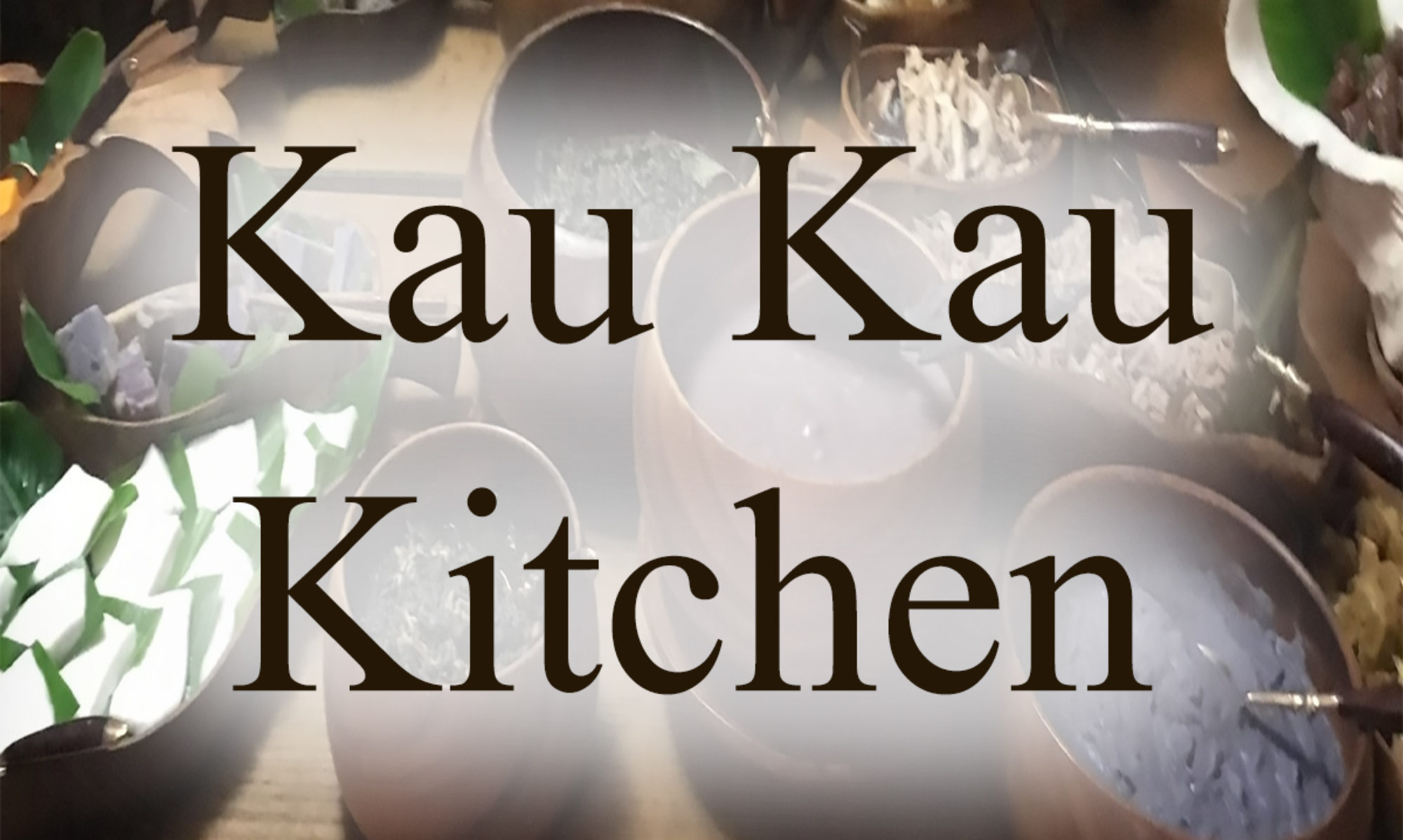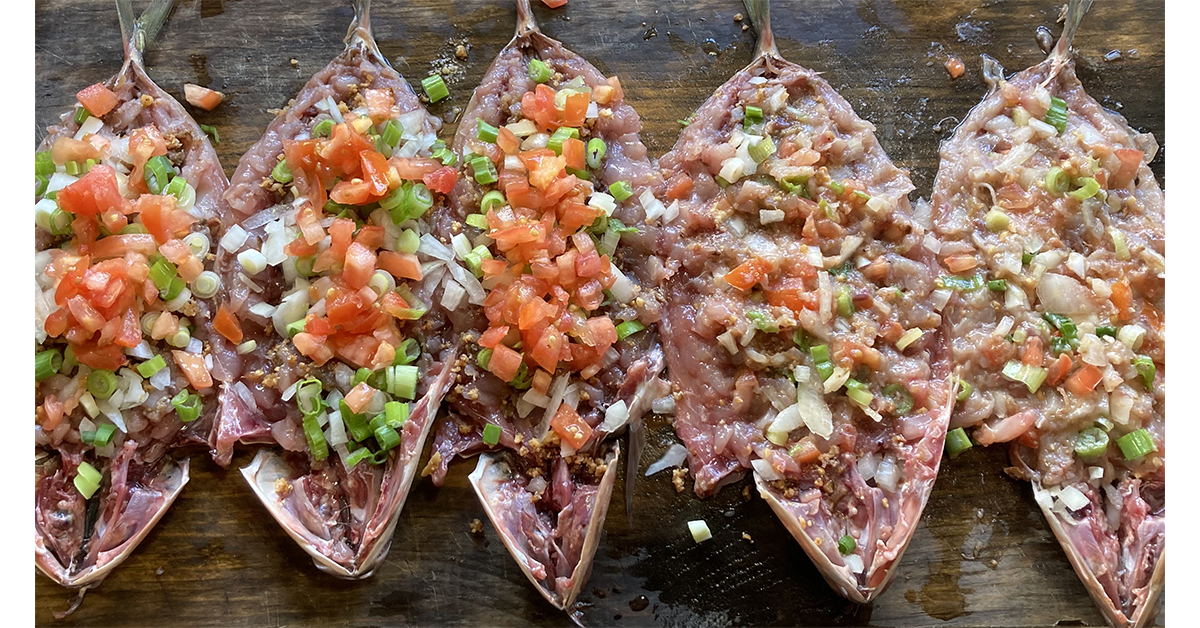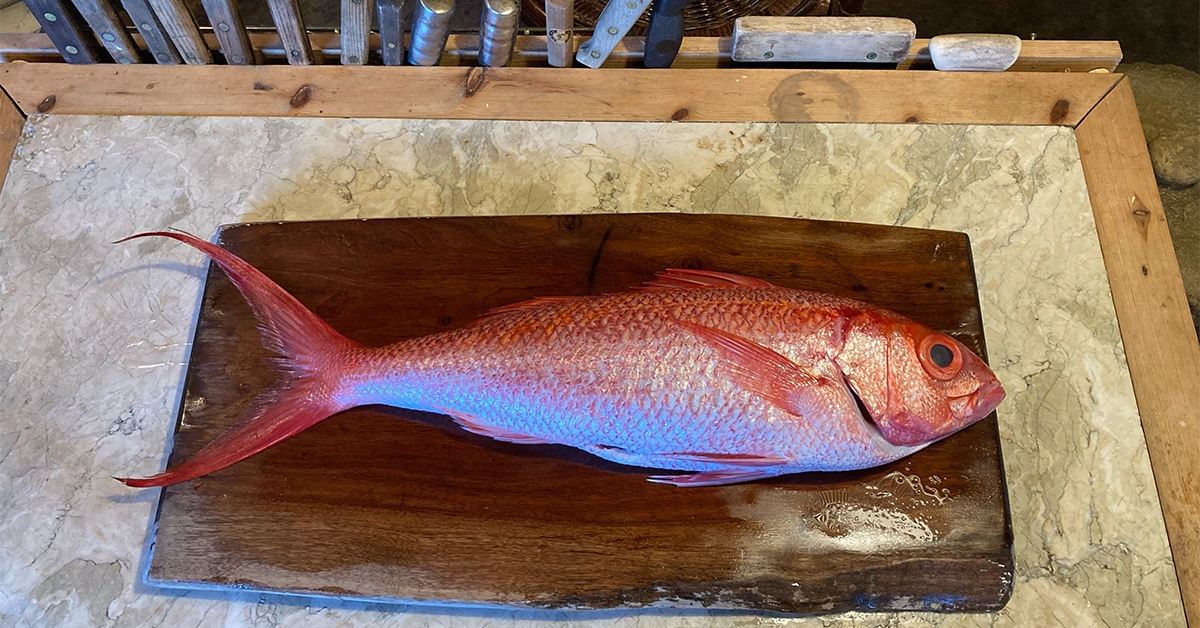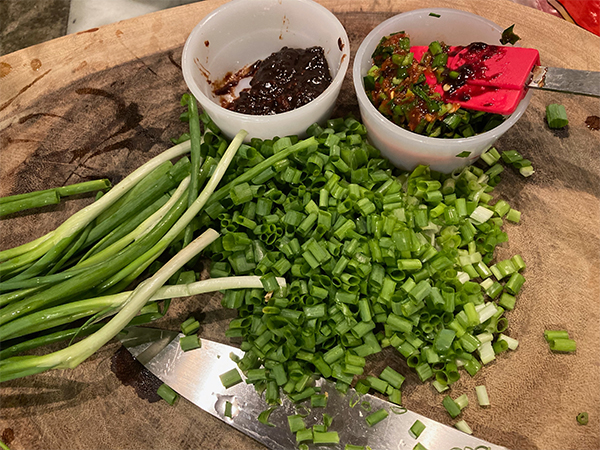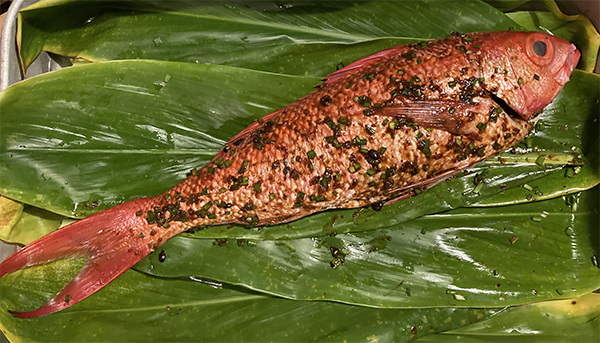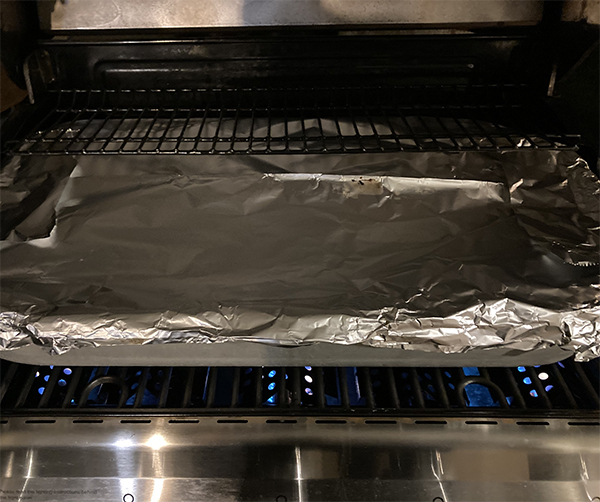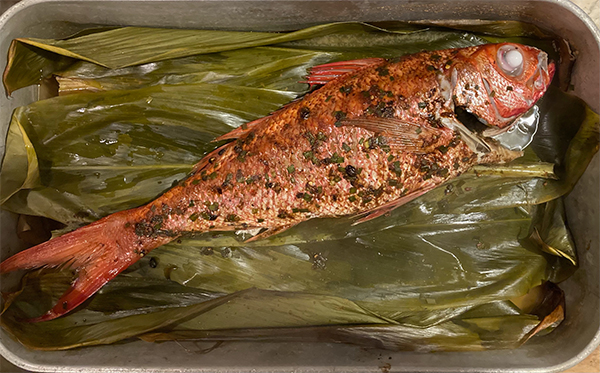This past weekend, a friend brought us a gift of ʻōpelu (Mackerel scad, Decapterus pinnulatus or D. maruadsi). The timing was perfect, as I had been ʻono for (craving) lomilomi iʻa (fish massaged with condiments) for several weeks.
This is an old traditional recipe. Leave out the onions and tomatoes, and you’ll be eating the same kind of food our ancestors ate hundreds of years ago!
This dish is a close relative to poke. Poke generally is made from a large fish, the flesh of which is cut into blocks (poke literally means to cut something crosswise into blocks). Various seasonings and condiments are then mixed with the blocks of fish.
Lomilomi iʻa (lomilomi – massage / iʻa – fish) is generally made from small fish, the flesh of which is left in the skin and massaged with seasonings and condiments. The fish is then folded, flesh inside, and left to chill for an hour or longer to miko, to allow the flavors to develop and become tasty. If the fish is dry, or the day is warm, an ice cube may be placed inside each fish to chill and moisten it.
I learned to make this dish from my Nana’s dear friend, “Queenie” Arioli (Edith Carolyn Laakaumokuakama Arioli née Sharratt). I was probably about nine years old, so this was over a half century ago! We were at a house party in one of those marvelous old sprawling Island-style homes out in Waiākea, back when Waiākea was on the outskirts of Hilo. I was sent into the kitchen to kōkua (help) as was expected of children at the time. There beside the sink was a whole cooler full of ʻōpelu.
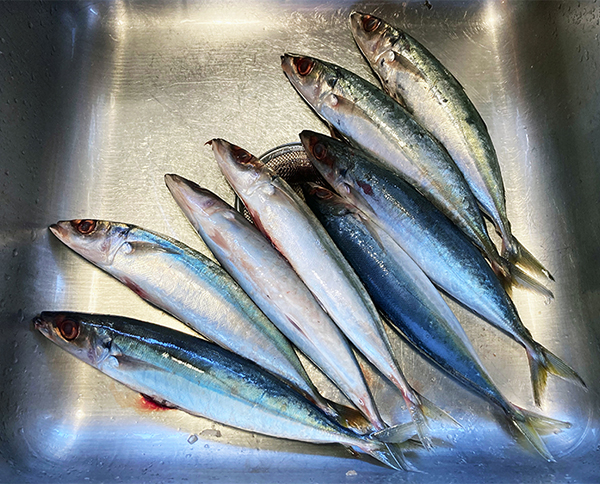
On the counter were bowls of the ingredients which we would lomilomi into the ʻōpelu: limu kohu (seaweed), ʻinamona (kukui nut relish), and bowls of minced round onion, spring onion, and tomato. The limu and ʻinamona are traditional condiments, while the onions and tomatoes were introduced by Europeans. Both the limu kohu and the ʻinamona have salt in them, so you will want to store them in plastic containers, or glass containers with plastic lids.
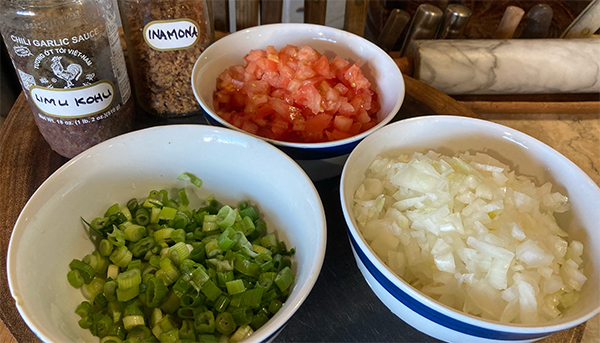
Mrs. Arioli (as I was expected to call her) was very kind in teaching me how to clean the delicate soft-bodied fish. She also was very kind when I was asked to dance hula for her. She made suggestions for my improvement, but without making me feel bad.
A somewhat dull knife is scraped along the skin to remove the scales, which are tiny and soft. They almost can be removed by simply rubbing your fingers on the fish. Almost, but not quite. So a knife is gently scraped along the skin and the scales wiped off into a kini (can).
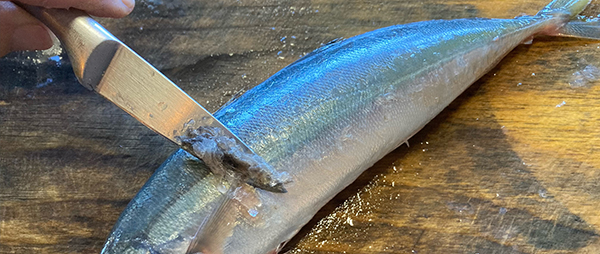
The belly is then slit and the head split so that the guts, gills, and spine can be removed and the fish laid flat. You’ll probably need to pull out some of the fine hair-like bones one at a time. Some people leave them and just spit them out later. I don’t like them, so I try to remove them all.
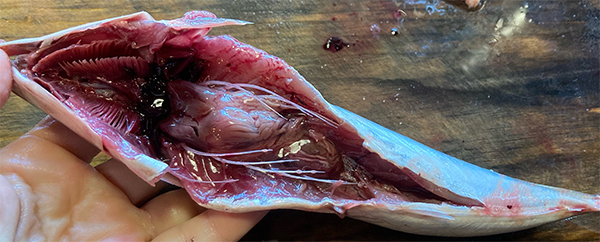
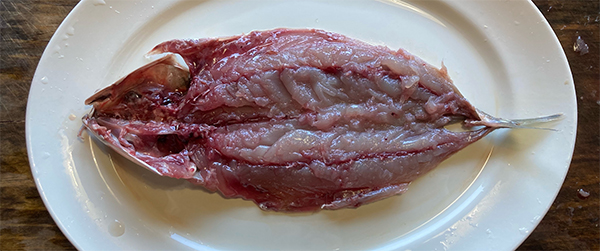
Once your iʻa (fish) is cleaned and split or butterflied, fold them flesh inside, wrap them, and set them in the fridge or a cooler to chill.
If you did not already prepare your condiments, you can do that now while the fish is chilling.
At least an hour, or as much as a day, before serving, get out the fish and add the seasonings and condiments. I like to add the seasonings—limu kohu and the ʻinamona—first so that they can start to miko the fish already.
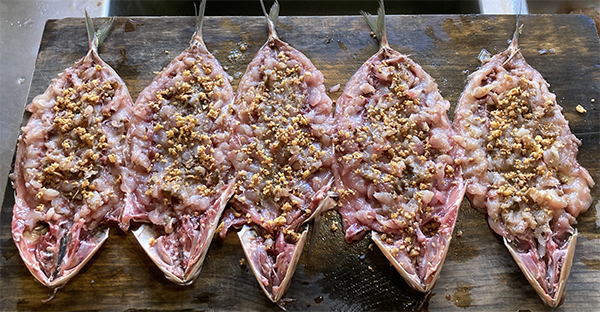
Next, I add the tomato and onions and lomilomi them into the flesh as well.
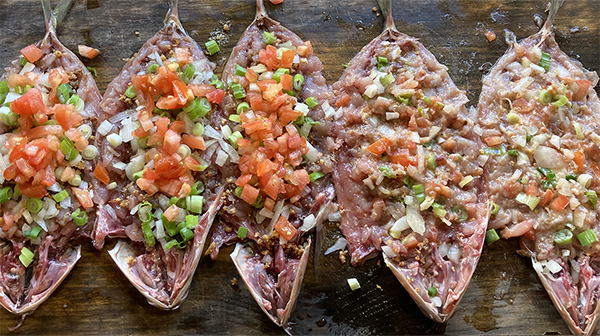
When the ʻōpelu are prepared, then fold them and place in a covered container. Remember, if the fish is dry, or the day is warm, an ice cube may be placed inside each fish to chill and moisten it.
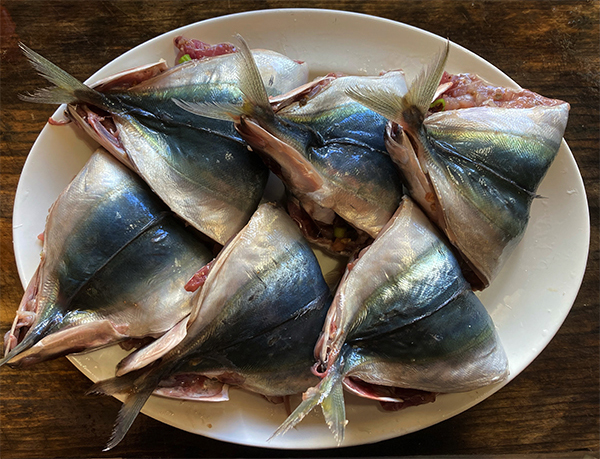
My favorite thing to eat with lomi ʻōpelu is poi, but I didn’t happen to have any, so we had it for supper with rice.
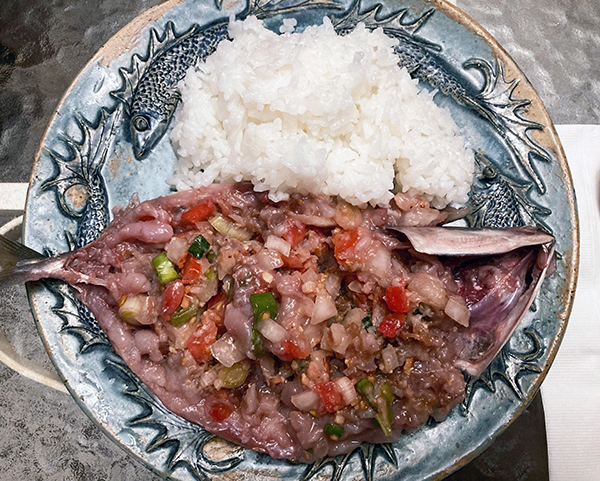
So now you have a bunch of fish bones, as well as the roe, milt, livers, hearts, and little bits of flesh. What do you do with them? Time to get out a heavy skillet and cook up a batch of ʻōpelu bone!
Heat coconut oil and a little butter for flavor until it is sizzling hot. Lay in the fish spines and sprinkle with garlic salt. When they are nicely toasted on one side, turn them over and fry the other side crunchy crispy. I love these as a snack!
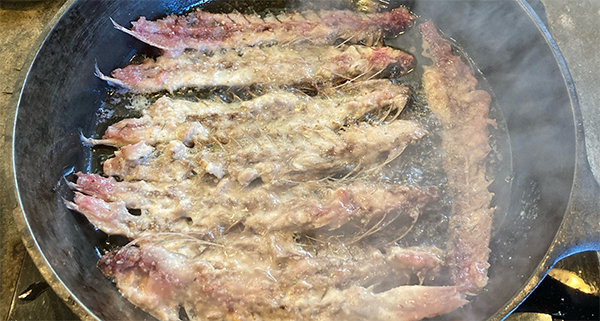
While the bones are crisping, mix some of the onions and tomatoes with the roe, etc.
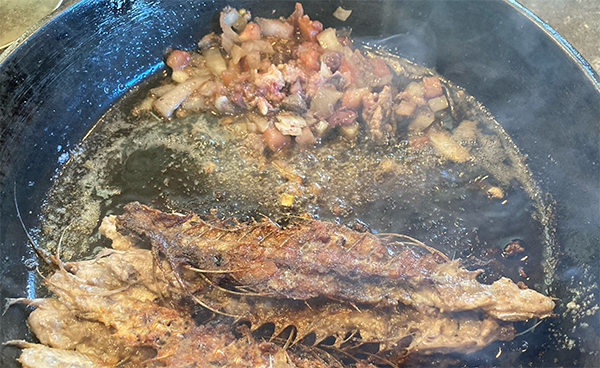
Stack the bones on one side of the skillet to stay warm, and then tilt the skillet so the oil runs to the other side. Add the fish mix and fry in the remaining oil. Serve hot.
